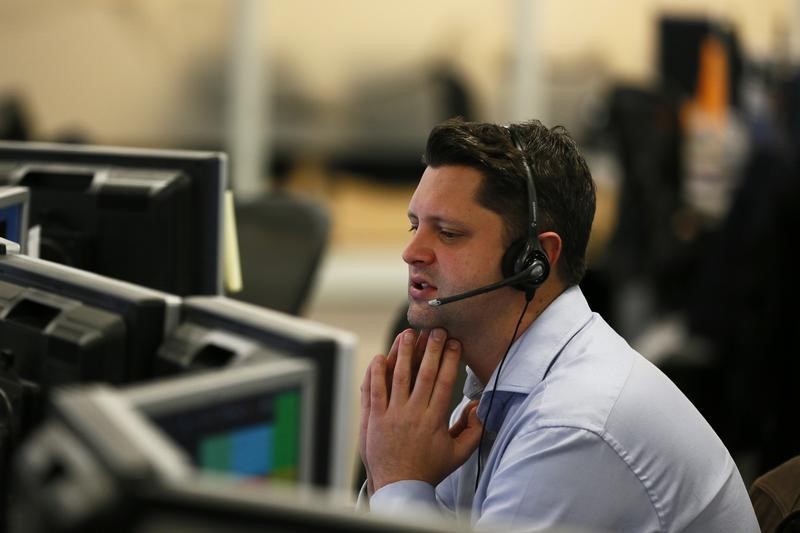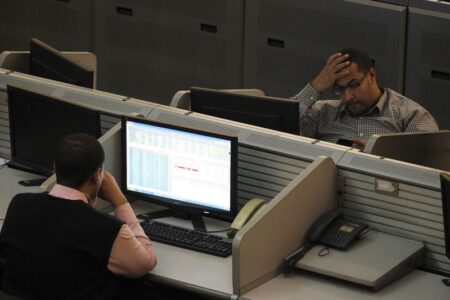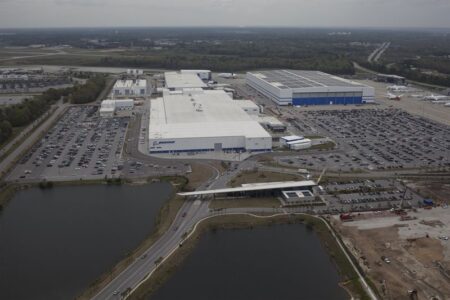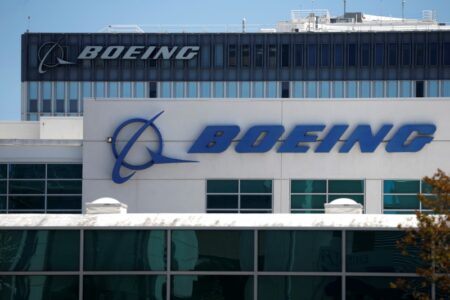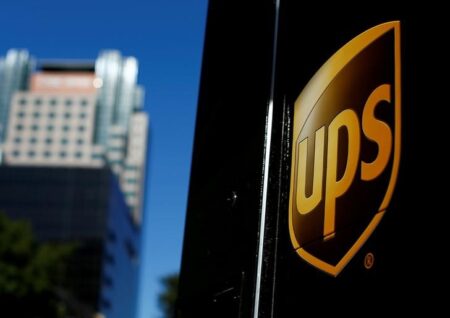Packaging (NYSE:) Corporation of America (ticker: PCA) has reported a robust financial performance in the third quarter of 2024, with CEO Mark Kowlzan announcing significant gains in net income and sales. The company’s net income rose to $238 million, translating to $2.64 per share, while adjusted net income reached $239 million, or $2.65 per share. This performance marks an increase from the previous year’s $185 million, or $2.05 per share. Net sales also saw a substantial rise, reaching $2.2 billion from $1.9 billion year-over-year. EBITDA, excluding special items, climbed to $461 million from $388 million. The strong results were attributed to increased volumes and favorable pricing in the Packaging segment.
Key Takeaways
- PCA’s net income and sales showed significant year-over-year growth in Q3 2024.
- The Packaging segment drove earnings, with an EBITDA margin increase to 22.2%.
- Record production levels were achieved, but inventory targets fell short due to high demand.
- The Paper segment also performed well, with a 27.0% EBITDA margin.
- PCA anticipates continued strong demand but faces challenges due to fewer shipping days and potential crop damage in Florida.
- The company plans to invest in capital projects to support growth and optimize operations.
Company Outlook
- PCA expects Q4 earnings of $2.47 per share.
- Strong demand in the Packaging segment is likely to continue.
- Shipping volumes may be impacted by two fewer shipping days and hurricane-related crop damage in Florida.
- Capital investments are ongoing to support growth and service quality.
Bearish Highlights
- Inventory levels are below targets due to stronger-than-expected demand.
- Durables are underperforming relative to non-durables, reflecting consumer spending trends.
- Tougher year-over-year comparisons are anticipated starting next year.
Bullish Highlights
- PCA achieved a record quarter for containerboard production at almost 1.3 million tons.
- The company has invested $2 billion over five years in capital expenditures to enhance box plant capabilities.
- Online shopping growth contributes positively to the company’s performance.
Misses
- Despite record production, PCA did not meet inventory targets.
- Maintenance outage costs were higher this year, attributed to the Jackson shutdown.
Q&A Highlights
- Growth in volumes comes mainly from existing customers, with new clients also contributing.
- Increased operating costs were due to higher OCC costs, labor, benefits, and overhead expenses.
- PCA has sufficient capacity to meet customer demand for the next few years.
- Focus will be on optimizing current operations before undertaking larger projects.
PCA’s third-quarter performance reflects a company navigating a complex market environment while still achieving growth. With a strong focus on optimizing operations and investing in capital projects, PCA aims to maintain its service quality and meet customer demands in the face of potential challenges ahead.
InvestingPro Insights
Packaging Corporation of America’s (PKG) strong Q3 2024 performance is further illuminated by recent InvestingPro data and tips. The company’s market capitalization stands at an impressive $20.38 billion, reflecting investor confidence in its growth trajectory. This aligns with the reported increase in net income and sales for the quarter.
InvestingPro data shows that PKG’s revenue for the last twelve months as of Q2 2024 was $7.93 billion, with a quarterly revenue growth of 6.31% in Q2 2024. This growth trend supports the company’s positive outlook and expectations for continued strong demand in the Packaging segment.
An InvestingPro Tip highlights that PKG has raised its dividend for 13 consecutive years, demonstrating a commitment to shareholder returns. This is particularly noteworthy given the company’s robust financial performance and plans for capital investments to support growth.
Another relevant InvestingPro Tip indicates that PKG’s cash flows can sufficiently cover interest payments. This financial stability is crucial as the company continues to invest in capital projects and navigate potential challenges such as fewer shipping days and crop damage impacts.
For investors seeking a more comprehensive analysis, InvestingPro offers 11 additional tips that could provide valuable insights into PKG’s financial health and market position.
The company’s P/E ratio of 28.57 suggests that investors are willing to pay a premium for PKG’s shares, possibly due to its strong market position and growth prospects in the packaging industry. This valuation metric, combined with the company’s performance and outlook, presents a nuanced picture for potential investors to consider.
Full transcript – Packaging Corp of America (PKG) Q3 2024:
Operator: Good morning, everyone. Thank you for joining Packaging Corporation of America’s Third Quarter 2024 Earnings Results Conference Call. Your host will be Mark Kowlzan, Chairman and Chief Executive Officer of PCA. Upon conclusion of his narrative, there will be a question-and-answer session. I’d like to turn the conference call over to Mr. Kowlzan. Sir, please proceed when you’re ready.
Mark Kowlzan: Thank you, Jamie. Good morning, everyone, and thank you all for participating in Packaging Corporation of America’s third quarter 2024 earnings release conference call. Again, I’m Mark Kowlzan, Chairman and CEO of PCA. With me on the call today is Tom Hassfurther, Executive Vice President, who runs our packaging business, and Bob Mundy, our Chief Financial Officer. As usual, I’ll begin the call with an overview of the third quarter results, and then I’ll turn the call over to Tom and Bob, who will provide further details and then I’ll wrap things up and then we’d be glad to take questions later. Yesterday, we reported third quarter net income of $238 million, or $2.64 per share. Excluding special items, third quarter 2024 net income was $239 million, or $2.65 per share compared to the third quarter of 2023 net income of $185 million or $2.05 per share. Third quarter net sales were $2.2 billion in 2024 and $1.9 billion in 2023. Total company EBITDA for the third quarter excluding special items was $461 million in 2024 and $388 million in 2023. Details of special items for both the third quarter of 2024 and 2023 were included in the schedules that accompanied our earnings press release. Excluding special items, the $0.60 per share increase in third quarter 2024 earnings compared to the third quarter of 2023 was primarily driven by higher volume of $0.94 and prices and mix $0.03 in the Packaging segment, higher volume in the Paper segment for $0.03, lower freight and logistics expenses of $0.09, lower scheduled outage expenses for $0.06 and lower interest expense for $0.05. These items were partially offset by lower prices and mix in the Paper segment for $0.02, higher operating and converting costs, $0.51, and higher depreciation expense, $0.05, and other expenses, $0.02. The results were $0.20 above our third quarter guidance of $2.45 per share, primarily due to higher volume in our Packaging and Paper segments and higher prices and mix in the Packaging segment. Looking at our Packaging business, EBITDA excluding special items in the third quarter of 2024 of $446 million with sales of $2 billion resulted in a margin of 22.2% versus last year’s EBITDA of $374 million with sales of $1.8 billion and a 21.3% margin. The operational benefits of our capital spending program and the continued great focus and execution by our sales, customer service, mill and corrugated products plant employees continue to deliver impressive results. Setting new all-time quarterly records for containerboard production, total box shipments and shipments per day, while meeting the service and quality needs of our customers would not have been possible without a long-term, well thought-out strategic capital spending plan and the hard work and dedication of our employees. Even with record production, as a result of the strong demand, we were not able to meet our inventory target at the end of the quarter. With some adjustments we made to the DeRidder Mill’s scheduled outage plans for this year, plus two less corrugated shipping days during the fourth quarter and with a lighter than average schedule in the first half of 2025, we do hope to reach our target by the end of the year. I’ll now turn it over to Tom, who will provide further details on containerboard sales and corrugated business.
Tom Hassfurther: Thanks, Mark. The corrugated products demand strengthened throughout the quarter and, as Mark mentioned, resulted in record-breaking performance for our plants. Shipments per day were up 11.1% over last year’s third quarter, and total shipments with one additional shipping day were up 12.9%, versus the second quarter of 2024, shipments per day were up 5.8%, and total shipments with one less shipping day were up 4.1%. Outside sales volume of containerboard was 45,000 tons above last year’s third quarter and 7,000 tons above the second quarter of 2024. Prices and mix came in ahead of expectations as implementation of our previously announced price increases for containerboard and corrugated products was managed very well. Domestic containerboard and corrugated products prices and mix together were up $0.35 per share versus the second quarter of 2024 and flat compared to the third quarter of 2023. Export containerboard prices were of $0.03 per share compared to the second quarter of 2024 and the third quarter of 2023. I’d like to mention that in addition to ensuring our customers’ quality and service needs were met during a record-breaking quarter, our employees did not get complacent. Their focus on continuous improvement regarding customer service as well as efficiency, quality, productivity, and optimization improvements across our packaging segment is relentless and drives our industry-leading results. They fully understand that there are always areas that can be improved upon even with record-setting performance. Now I’ll turn it back to Mark.
Mark Kowlzan: Thanks, Tom. Looking at our Paper segment, EBITDA excluding special items in the third quarter was $43 million with sales of $159 million or a 27.0% margin compared to the third quarter of 2023, EBITDA of $35 million and sales of $158 million, or a 22.4% margin. Our previously announced price increases were implemented as planned, with average prices and mix up 2% versus the second quarter 2024 levels, and down 2% versus the third quarter of 2023. Volume, which exceeded forecast levels, had very good back to school shipments and strong printing and converting demand. Volume was up 4% versus the third quarter of 2023, and was 5% above the second quarter of 2024. No operations were managed very well with excellent machine efficiencies and material usage, especially with chemicals and energy. And now I’ll turn it over to Bob for more financial details.
Bob Mundy: Thanks, Mark. Cash provided operations during the quarter totaled $327 million, with free cash flow of $180 million. And more significant cash payments during the quarter included capital expenditures of $147 million, common stock dividends totaled $112 million, $77 million for federal and state income tax payments, and $26 million for pension and other post-employment benefit contributions. We ended the quarter with $841 million of cash, including marketable securities, and our liquidity on September 30th was approximately $1.2 billion. Lastly, our planned annual maintenance outage expense for this year has churned slightly due to the adjustments made to the DeRidder Mill outage that Mark referred to earlier. The third quarter outage impact was $0.17 per share, or $0.03 unfavorable to our previous guidance. And the new estimate for the fourth quarter is $0.20 per share, or $0.04 favorable to our guidance. The total estimate for the year is $0.87 per share. I’ll now turn it back over to Mark. Thanks, Bob.
Mark Kowlzan: Thanks Bob. Looking ahead as we move from the third and into the fourth quarter, we expect demand in our Packaging segment to remain strong with corrugated shipments per day continuing to strengthen and slightly higher containerboard volume. However, total shipments for the corrugated business will be impacted by two less shipping days and the recent hurricane damage to the strawberry crops in Florida. With current containerboard inventory below our target levels, we will also attempt to build some inventory prior to yearend. We expect continued realization from the previously announced price increases and higher export prices, although with a seasonally less rich mix compared to the third quarter. In our Paper segment, shipments will be lower versus the seasonally stronger third quarter. While prices and mix should be fairly flat, operating and converting costs are expected to increase, driven by higher seasonal energy costs and chemical costs. Scheduled outage costs are estimated to be $0.12 per share higher than the third quarter, and depreciation expense should be slightly higher also. Considering these items, we expect four quarter earnings of $2.47 per share. With that, we’d be happy to answer any questions, but I must remind you that some of the statements we’ve made on the call constituted forward -looking statements. The statements were based on current estimates, expectations, and projections of the company, and do involve inherent risks and uncertainties, including the direction of the economy and those identified as risk factors in our Annual Report on Form 10-K, and in subsequent quarterly reports on Form 10-Q filed with the SEC. Actual results could differ materially from those expressed in the forward-looking statements. With that, Jamie, I’d like to open up the call for questions, please.
Operator: [Operator Instructions] Our first question today comes from George Staphos from Bank of America.
George Staphos: Hi, everyone. Good morning. Thanks for taking the question. And congratulations on the progress so far. Gentlemen, I guess the first question I had is standard. Can you talk a bit about where bookings and billings are to start the fourth quarter with whatever adjustment you want to make either per workday or actual? And if you could shade or provide some color in terms of what end markets or product lines are seeing the most or lease traction. Second question I had for you, and you talked about it last quarter. You had favorable results versus your guidance. Can you talk about how whatever growth you’re getting incrementally in the brown market, so to speak, is impacting your overall mix and sort of any implications for the outlook for earnings and EBITDA growth for the future?
Tom Hassfurther: Hey, George, it’s Tom. I’ll take that question. First of all, on a per day basis, our bookings and billings are up just a little over 8% versus ‘23, so we continue to be in a very nice growth mode. The end markets involve a little bit about your question regarding growth and mix as well. So let me talk about the growth first. And where we’re seeing some end markets that are growing more than perhaps others. And probably the biggest difference that we’re seeing right now ow is that the e-comm area across the board, and of course, I’ve mentioned many times that we have a lot of e-commerce customers, and that a lot of our customers got into e-comm a number of years ago. That segment continues to grow nicely, and that’s evidenced by anything you see out there data-wise regarding big box stores and some of this other stuff. So a lot of online shopping. And then on the other hand, some of that graphics mix which is POP related, point of purchase displays and things like that, those are pretty flat. So we’ve got one area growing quite nicely and another area that’s been pretty flat over the last few years. And it’s the same thing as we talked about in the past because of consumer spending and because of kind of where consumers are right now. The durables certainly haven’t performed as well as the non-durables, at least from our segments of business that we have. So hopefully that gives you enough understanding of kind of where we are and what we’re seeing.
George Staphos: Tom, that’s great. I guess my last one, I’ll turn it over. Can you talk a little bit about what the crop damage might mean to you in terms of volume? And as you look out to next year, do you need to ramp any investment, whether it’s working capital, CapEx, to keep the growth that you’d like to have looking out to ‘25, given how tough the comparisons are. Thanks and good luck.
Tom Hassfurther: Yes, George, that’s a great question. Number one is, it’s a little unknown how severe the crop damage is going to be. It’s a spotty all over the state of Florida and, of course, that’s a very big market for us. So we anticipate that what would traditionally be a full crop that would come in during the fourth quarter is now going to come in at the end of the fourth quarter and bleeding into the first quarter of next year because they’re going to have to do a lot of replanting. All those plants were quite young, so that’s what caused a lot of the damage. And relative to CapEx and investments, as I’ve said many, many times, we invest where the customers need us to invest, and we’re continuing to do that. One of the commentary I said about our employees and what a great job all of our associates have done is because we’ve had a lot of capital projects going on while we’ve had this surge in demand, and they’ve done just an unbelievably great job of making sure that we serviced our customers the way they need to be serviced with the quality products that they demand.
Mark Kowlzan: And keep in mind with that commentary, George, as we said on the July call, this year we will have worked on at least 60 major projects within our box plant system with new corrugators, major corrugator rebuilds, new converting lines. As we announced in July, we’re heavily engaged at this point in building out the new operations in Glendale, Arizona that will start up early next year. And then just going forward, and we’ll talk about this more in the January call, but we’ve got plans on the books to build out a couple of new big plants over the next two and a half, three years also. But we will continue the pace of reinvestment in these plants. This has been the — it’s driven the capability to be where we are today. We said this on the call, I believe, in July. If you include this year’s capital spending over the last five years, we would have spent $2 billion just on the box plant system, recapitalizing and building out some new plants. And in many cases, in almost all cases, we’ve either quadrupled or increased even over that the capability of these box plants to produce quality packaging for the customers. And so we’re not going to let up on that momentum that we have. That’s what gives us the ability to grow and take care of our customers.
Operator: Our next question comes from Mike Roxland from Truist.
Mike Roxland: Thanks, Mark, Tom, Bob, for taking my questions and congrats on a real good quarter. Your volumes continue to outpace the industry and your nearest peers. And how should we think about your volumes and when growth should normalize? Is that something that should occur early next year, second half of next year? Or could this even play out longer, given the ongoing telehealth infrastructure and use that your larger peers are going?
Tom Hassfurther: Mike, we plan to take advantage of every opportunity we get where we can profitably grow our revenue. And I think right now we’re able to perform in a way that is very desirable for a lot of our customers certainly most of our growth comes within our existing customers and then we get opportunities outside of that as well but they happen to be looking for something we’re able to deliver and I think those opportunities will remain. Now, there’s no question that starting next year the comps are going to get tougher. We made a big jump this year and but we — our key objective is profitable revenue growth and we’ll continue to go down that path and I’m very confident of it especially given the fact that as I’ve mentioned many times our capital expenditures are not a build it and hope they will come it’s we do it based on what our customers have asked us to do and that provides us a lot of opportunities and efficiencies as well.
Mark Kowlzan: Mike what Tom just said about the comps, don’t forget last year’s fourth quarter, I think, we were up probably 5.5% to 6% last year’s fourth quarter over the prior year’s fourth quarter. So the 8% he’s calling up is over a very big comp. So again if you also look back over the last 20 years, PCA has a track record of significantly outgrowing our customers on the packaging side year-over-year, decade after decade and we intend on continuing that trend.
Mike Roxland: Got you, that’s great color. It sounds like Mark, Tom basically just said that you could probably outgrow your peers probably at a faster rate than you had historically given some of the moving pieces that are happening in the industry.
Tom Hassfurther: Mike, I don’t want to really compare ourselves to our competitors because we just basically stay focused on what our opportunities are, and we stay focused on our customers and what their demands are. And that takes us forward.
Mike Roxland: Got you. One quick follow up. Mark, you said you put out a teaser, you mentioned some new plants you’re looking to build out over the next few years. You mentioned more details in January. Anything you could share with us now on those new plants, particular regions, and, Mark, is there anything you could share regarding what you’re looking to accomplish with those new box plants over the next two to three years?
Mark Kowlzan: No. We’ll give you more details in January.
Operator: Our next question comes from Gabe Hajde with Wells Fargo.
Gabe Hajde: Mark, Tom, Bob, good morning, and congrats on the good quarter. I wanted to dig in a little bit on a comment you made about a lighter maintenance outage schedule in H1 ‘25, marrying that up with, again, comments about having a little bit of difficulty seemingly, rebuild inventories, and, of course, that’s a function of the performance. But it seems like in the outside world, I mean, maybe that’s a little bit of marginal contribution on the production side, I don’t know, 50,000 tons or something like that. Two part questions. One is, can you give us a sense for maybe the swing H1 versus H2 on the maintenance outage? And second, Mark, you guys have been really diligent about investing in the system and the business. You’ve talked about before being okay, being over-integrated, but you’re seemingly kind of hit in red line right now in terms of your ability on the containerboard side. How long could you buy paper in the open market or maybe some thought there in terms of what the plan could be?
Mark Kowlzan: Gabe, I think you asked 10 questions in that one question. First of all, as far as the outage schedule, where are we calling it lighter for next year. Don’t forget, we had that massive annual outage at Jackson to finish up the last phase of rebuild work at Jackson. That was about 40 some odd days’ worth of effort. And then just the learning curve through the springtime to get the machine up where we wanted it to be. But for the 2025 year, we won’t have those types of outages at any of our mills. But frankly, we’re planning on just the normal routine annual outages where you take the mills down, clean inspect, routine boiler work, turbine work, machine efforts. So it ought to be a significantly lighter year in that regard without calling out a lot of details. So that’s what we’re implying in that. As far as the containerboard supply into the market, never underestimate us. We have long-term plans on how we will take care of our customers after the discussion that we have internally every day, so I’m confident that for the next few years we’re going to be in a really great place to grow and take care of our customers’ needs. That’s all I want to say about that.
Gabe Hajde: Okay. And then I guess maybe Bob, you did mention any sort of share repurchase, $851 million I think on the balance sheet, but just good leverage position. What opportunities do you see for the capital on a go-forward basis?
Bob Mundy: Well, Mark may be the better one to answer that, Gabe, but as you know, we always evaluate how we allocate capital, looking for the biggest return for the shareholders, what makes sense for our strategic capital spending plans and that’s again and be as opportunistic as we can with our share repurchases. So, Mark, unless you have something different that’s I think that’s how we’ll continue.
Mark Kowlzan: Yes I think if you look at our capital spend this year we called out I think the original number was $470 million dollars and then when we identified the opportunity down in the Phoenix area which specifically Glendale that number went up plus, we saw some other opportunities within some of the plants for new corrugators and some converting lines so the call out for the rest of the year I believe is up closer to $700 million right now it’s $680 some odd million as we sit here but these are going into high return very, very valuable accretive opportunities within the system and we’ve got a runway and a portfolio of those opportunities we’re going to continue to take advantage of and but frankly that’s the best use of our excess cash right now. And I do believe our investors tend to agree and they do support the way we handle our cash.
Operator: Our next question comes from Mark Weintraub from Seaport Research Partners.
Mark Weintraub: Thank you. Congrats on another great quarter. So I just got maybe a little bit following up along the lines of containerboard production et cetera and opportunities to increase. Where were you in terms of operates in the third quarter? Were you pretty full out? Was Wallula running full in the third quarter?
Mark Kowlzan: Yes, all the mills were up and running. Last year, if you’ll recall we brought Wallula back up and then in January, I think we finished the start-up of Wallula with the complete start-up of the mill. So essentially, we’ve run Wallula full out this year. And then again, don’t forget, though, we had the big shutdown at Jackson. So that was a big disruption. And so, but as you could expect, we never sit still. We’re always working on optimization opportunities at all of the mills. And so these will continue. But I think the good news is that we continue to run in a very effective, very efficient manner of taking advantage of our assets, and then planning out into the future years where tons, where, I should say, containerboard will come from to supply the customer’s needs on the corrugated side. And I’m very confident. We’ve got a good plan for the next few years.
Mark Weintraub: Understood. And are there potentially significant internal Jackson type opportunities? Or is it more, at least internally, going to be smaller projects across the board, perhaps?
Mark Kowlzan: It’s a combination. We’ve got a few projects identified right now, quite frankly. We’ve got some paper machines in the system that time goes by pretty quickly. Counce Mill received the lion’s share of capital spending in the 1990s and the early 2000s. That’s 25 years ago. And so we’ve got opportunities to look at Counce number one machine as an example and really do some things to that machine to get some good incremental capability out of that. Valdosta is another example of a machine that has incremental opportunity. And then, depending on how much capital you want to spend in the future years, in terms of adding another paper machine, if we had to in the future years. But right now, for the next few years, we’re in a very good place on how we take care of the customers. It would be a containerboard supply.
Mark Weintraub: And just because it deserves a little attention, the Paper segment did phenomenally in the quarter, the EBITDA margins. I guess it’s now just I Falls, and that’s always been a great facility for you. How much of it is it that everything that’s now going through I Falls versus what else might have been going on that you basically, at least based on my numbers, were as strong as you’ve ever been margin wise in the Paper segment?
Mark Kowlzan: Yes, I believe we had one quarter a couple of years ago that was at the same 27% level. But no, we have I Falls, it’s the one mill, it’s producing close to the 500,000 tons a year of uncoated freesheet production. That’s a blend of the converting grades, and probably 75% of that is cut size for a copy machine type paper. But that mill is hitting on all eight cylinders, and it’s been a great place, and well capitalized, and great management, great employees. So we rationalized that paper business as we were converting the Boise assets. And we’re in a good place with the market, and we’ll just continue to take advantage of that.
Mark Weintraub: Super, I appreciate it. One last real, quick one. I think you mentioned $0.87 for maintenance outage this year. If I heard you right, you’re saying that might be lower next year. What would normal be for annual maintenance outages?
Bob Mundy: Yes, Mark, it’s normal, I don’t know, this year obviously with Jackson included in that, it was higher than normal, but yes, we anticipate, and Mark sort of touched on it earlier with just incremental volume next year if you just look at it from a change in our outage schedule this year to next year, right now at a high level, there’s probably close to 100,000 tons of additional production next year. So, using that as sort of a way to get at, what’s normal would take that off of the $0.87 and that’s probably the good ballpark.
Operator: Our next question comes from Phil Ng from Jeffries.
Philip Ng: Hey, guys. Congrats on another strong quarter. You’re certainly lapping tougher year-over-year comps, but operating costs stepped up noticeably. Any color, Bob, I guess perhaps what you’re seeing where it’s a little bit more elevated and are you starting to see that level off? And then I think you guys called out how Jackson and maybe some of the inefficiencies and shutdowns. Was it dragged this year when we kind of look at the 2025, could this flippin be a good guy?
Bob Mundy: Well, I think your first question, Phil, to answer that, we said on the last quarter’s call, and it played out that way, that sequentially costs, we didn’t see a lot of increase, obviously sort of somewhat stable, slightly higher, but obviously at a very high level with all of the inflation that’s been going on for several quarters. If you look, if you’re referring to year-over-year, you have to keep in mind that third quarter of last year, we did not run Wallula, and we did this year. So this year we brought in our highest cost direct variable mill along with a lot of in-directs and things that you don’t incur when you’re shutdown, you bring that on, and there’s probably close to $30 million of cost just for that alone, third quarter this year versus last.
Philip Ng: Okay. And when you think about 2025 with all that kind of level set, and as you kind of pointed out, you’re starting to see that level off, could that operating cost be a good guy next year?
Bob Mundy: I mean, we’ll have to see. Obviously, keep in mind, the first quarter was always, you’ll see a big jump because, as we talk about every year with sort of the reload of a lot of the fringes and benefits on the salary side of things, you have increases that go into effect in that first quarter, so you’ll expect a jump for that reason alone, fourth to first. But right now, obviously, we don’t get too far ahead of ourselves regarding guidance, but hopefully, if we don’t see a lot of costs going down, but hopefully, yes, they have moderated for a while for the next few quarters, and that would bode well for us next year.
Philip Ng: Okay. And just some of the big inputs, as you see, could come down a little bit, energy’s been a little more favorable. Anything else to call out in terms of costs that you’re seeing, good or bad, trend -wise?
Bob Mundy: No, as I said, other than the two you mentioned, things are seemed to be fairly somewhat stable right now, Phil.
Philip Ng: Okay. That’s great. And when we think about your three key price mix, as you kind of pointed out, was better than we expected, and I think a little better than you anticipated as well. Was that more mix, or is that more box price realization coming through perhaps a little quicker than you expected? In the fourth quarter, per your guidance, you pretty much have all the box price increases fully implemented by now?
Tom Hassfurther: Phil, this is Tom. Relative to the box price increase, I’m going to remind everybody here because there was some discussion about this earlier, we have a very disciplined approach to our box price increase, and we do it by customer, by item, and we track every single one of them and make sure that they get implemented properly. And the timing of that hasn’t changed. It’s the same timing we’ve always gone through. We will have the lion’s share of it through the third quarter. We will have some tracking into the fourth quarter and actually a couple of contracts that trigger annually. so we’ll have it pretty much implemented certainly by the end of the fourth quarter and it’s, that that certainly has had an impact and I think our mix, if we’ve done a very, very good job of as this mix has changed a little bit figuring out how to produce that very effectively and efficiently and that’s helped us as well.
Philip Ng: And, Tom, these are annual contract triggering that trigger in 3Q or that triggers in the fourth quarter? Trying to make sure I understand that comment.
Tom Hassfurther: The couple annual ones are on a calendar year so trigger at January ’25.
Operator: Our next question comes from Anthony Pettinari from Citigroup.
Anthony Pettinari: Hi, good morning. Tom, you talked about growth and maybe some business wins in e-commerce and I am curious historically PCA has been really virgin weighted but you have the ability to swing into recycled. Is this new business like a bit more recycled based than your existing business and as you think about adding maybe some incremental tons or debottlenecking over the next few years, did you think about the kind of virgin versus recycled mix maybe differently than you would have 5 -10 years ago or just kind of wondered if you can comment on that and maybe just that industry trend in the US, whether that the kind of mix in the lightweight recycled has really taken hold or maybe is overhyped or how your position there?
Tom Hassfurther: Anthony, we really — we look at whatever the performances that any customer needs and we have done as we talked about in the past. We’ve done some significant things in the mills to put us in a much better position to be able to run even lightweights and things like that and that’s been important to us. Now, we don’t take that directly to any particular market or anything like that. We just are able to now react very well to whatever the customer needs and whatever their demands are and we’re able to do it on a performance basis that is most important and that really has always set us apart from the recycled industry, the 100% recycled boards and I think gives us somewhat of a competitive advantage. But again, it’s not — we’re not purposeful about taking a particular grade or anything like that to the market. We actually work the other way and do whatever the customer needs and meet those needs.
Anthony Pettinari: Okay, that’s helpful, and that makes a lot of sense. On inventories, you talked about, you plan to build inventory in 3Q ahead of the October DeRidder outage, but you talked about inventories kind of still below target levels. I just want to make sure I understand, like, is that really driven just by stronger than expected demand? Were there any other operational issues, technical issues that led to that kind of shortfall relative to maybe earlier expectations on inventories?
Mark Kowlzan: Yes, I mean, it was driven by demand. We did not expect to see the kind of growth this year that we have experienced, and we’ve been talking about building inventory all year, and we’ve not yet succeeded in coming anywhere near close to where we should be. And so, in some ways, though, it’s not a bad place to be. With the lower inventories, it keeps everybody on their toes, and it’s not a bad place to be. Everybody knows how critical every minute of machine production is to the system, so everybody’s fully engaged.
Operator: And our next question comes from Charlie Muir-Sands from BNP Paribas (OTC:).
Charlie Sands: Hi, good morning. Thank you very much for taking my question, so I’ve just got one remaining, actually. You touched a little bit on it earlier, but just in terms of the strength of volumes sequentially and particularly quarter-on-quarter, could you share any insight as to whether that is in particular coming from existing clients, existing business, or existing clients, new business, or indeed new clients? I appreciate it. We haven’t obviously got the industry data yet. All your peers haven’t reported either. I just want to get some color around where that incremental growth is coming from, do you think?
Tom Hassfurther: Charlie, I will tell you that number one is it comes from our existing customers and growing within our existing customers. That’s our primary target, but we have been fortunate enough to add other clients as well. And that’s played very important because I think that our reputation, we have in the marketplace is such that customers really do recognize the value you bring when you produce a quality product and you actually deliver it when you say you’re going to be there.
Operator: And our final question today comes from Ryan Fox from Bloomberg.
Ryan Fox: Good morning, guys. Could you maybe elaborate a little bit more about the higher operating costings and converting costs? I think you had mentioned the majority of that may have come from Wallula, but that may have only attributed to maybe two-thirds of that. Just curious to see what else was hanging out there?
Tom Hassfurther: Yes, Ryan, obviously the other pretty much is higher OCC costs versus last year. That’s the large number. And then labor and benefits. That would be another component. And those things that don’t get talked about a lot that are part of building rentals, professional fees, all that outside service costs, they incur higher costs as well and they pass those on to us on a lot of fronts. Insurance, taxes, a lot of those types of things or that would be the other component.
Ryan Fox: Got it. And I guess lastly, seems like a record quarter for containerboard production, almost 1.3 million tons. How much more do you have available per quarter, kind of theoretically?
Mark Kowlzan: We won’t get into that. Just suffice it to say that we’ve got plenty of capability to take care of our customers for the next few years.
Operator: And we do have a follow-up question from George Staphos from Bank of America.
George Staphos: Hi, guys. A quick one. Thanks for letting me sneak into the extent that you can comment. If we think about the next two years and you had a stack rank where you do expect to be able to get the paper to serve the growth and we think about three or four categories existing optimization and productivity across your mills, like you said, with Counce and Valdosta conversions or outside purchases, how would you stack rank those in terms of how you’ll supply the paper? Thanks, guys, and good luck in the quarter.
Mark Kowlzan: For the next year, it will be just optimizing what we currently have. And then over the next few years, it’s doing some bigger projects within our system. And so again, we’ve got a good runway for the next few years that we’ve already thought out here.
George Staphos: Thank you, Mark.
Mark Kowlzan: Okay. With that, I believe, if there are any more questions, we’ve got time. But, Jamie, if there’s anybody else out there?
Operator: Mr. Kowlzan, I see there are no more questions at this time. Do you have closing comments?
Mark Kowlzan: Thank you for joining us today. I really appreciate everybody’s time and look forward to talking with you at the end of January when we review the full year 2024 and the fourth quarter. Have a good rest of the day and a great holiday season. Thank you.
Operator: Ladies and gentlemen, with that, we’ll conclude today’s conference call and presentation. We do thank you for joining. You may now disconnect your lines.
This article was generated with the support of AI and reviewed by an editor. For more information see our T&C.
Read the full article here







